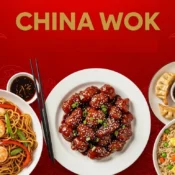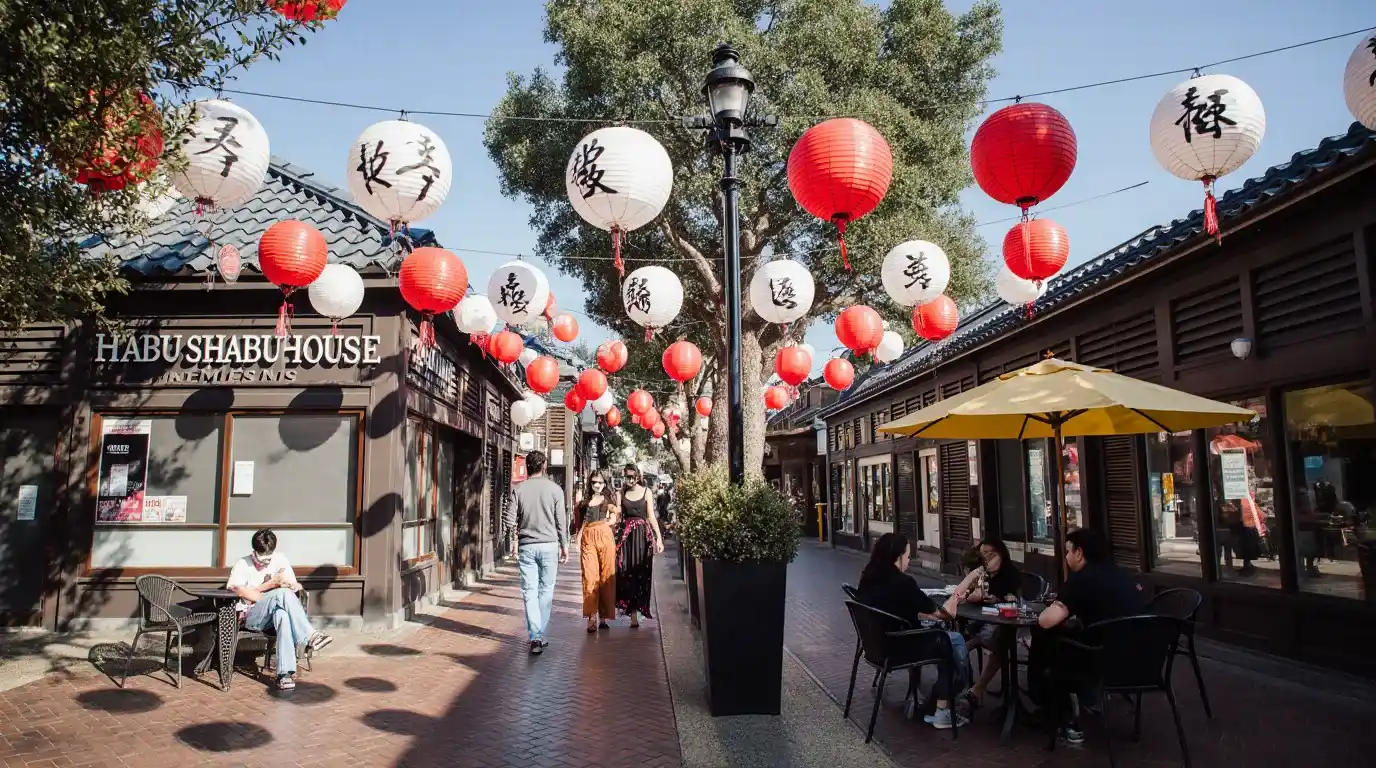
Explore Little Tokyo – Culture, Food & Hidden Gems 2025
Located in downtown Los Angeles, Little Tokyo is a vibrant district that showcases Japanese American heritage and cultural resilience. Spanning five city blocks, it is the largest Japanese-American community in North America and a hub of cultural exchange, commerce, and community life.
As the main cultural and civic center for Japanese Americans in Southern California, Little Tokyo is filled with energy from its authentic restaurants, traditional shops, museums, and cultural institutions. The stories of immigration, perseverance, and triumph can be felt in every corner, creating an immersive experience for both visitors and residents.
This guide explores Little Tokyo’s rich history and attractions:
- Historical roots dating back to the 1880s
- Recognition as a National Historic Landmark District
- Cultural attractions and museums
- Traditional and modern dining experiences
- Shopping destinations and local businesses
- Annual celebrations and community events
- Future developments and preservation efforts
From enjoying delicious Japanese food to discovering historical landmarks, Little Tokyo offers a unique blend of old and new, tradition and innovation. Whether you’re a foodie, history enthusiast, or cultural adventurer, this neighborhood promises an enriching journey through one of Los Angeles’s most beloved cultural districts.
Table of Contents
Historical Background of Little Tokyo
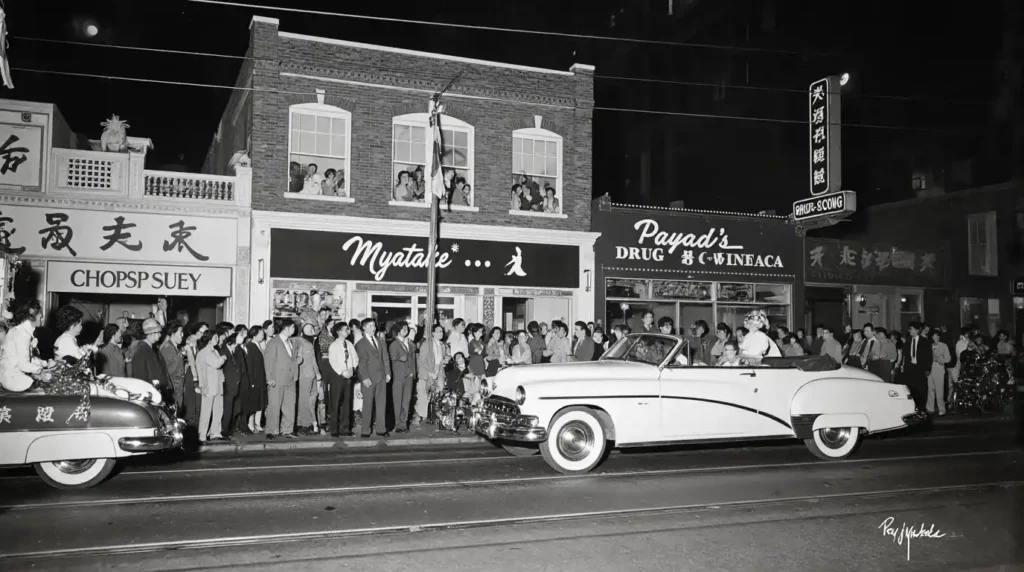
Little Tokyo’s history dates back to the 1880s, a significant time in American immigration history. The Chinese Exclusion Act of 1882 created labor shortages on the West Coast, unintentionally allowing Japanese immigrants to come to the United States in search of opportunities.
Early Settlement and Community Formation
These early Issei (first-generation immigrants) established a modest settlement near present-day Little Tokyo, creating a self-sustaining community centered around boarding houses and small businesses. The area quickly became a sanctuary for Japanese immigrants facing discrimination in other parts of Los Angeles.
Migration Waves and Community Development
The devastating 1906 San Francisco earthquake triggered a significant migration wave, as numerous Japanese Americans relocated south to Los Angeles. This influx catalyzed the development of vital community institutions:
- Religious Centers: Buddhist temples and Christian churches
- Educational Facilities: Japanese language schools
- Media Outlets: Rafu Shimpo newspaper (est. 1903)
- Cultural Organizations: Kenjinkai (prefectural associations)
By the 1920s, Little Tokyo had transformed into a thriving cultural hub, stretching across several city blocks with hundreds of Japanese-owned businesses, restaurants, and community centers.
Impact of World War II
The attack on Pearl Harbor in 1941 marked a dark chapter in Little Tokyo’s history. Executive Order 9066 forced approximately 120,000 Japanese Americans into incarceration camps, emptying the neighborhood of its core population. During this period, the area became known as “Bronzeville” as African American workers, drawn by wartime industrial jobs, moved into the vacant properties.
The demographic shift brought new cultural influences:
- African American jazz clubs and entertainment venues
- Native American community centers
- Latino-owned businesses and residences
Post-War Challenges and Revitalization Efforts
Post-war resettlement presented significant challenges for returning Japanese Americans. Many found their properties sold or businesses lost. The community faced the daunting task of rebuilding while navigating complex social dynamics with new neighborhood residents.
The 1950s and 1960s saw determined efforts to reclaim and revitalize Little Tokyo. Community leaders established organizations to preserve cultural heritage and protect residents’ interests. Despite urban renewal projects threatening historic buildings, the neighborhood’s resilient spirit prevailed, maintaining its position as a crucial Japanese American cultural center.
Little Tokyo’s Recognition as a National Historic Landmark District
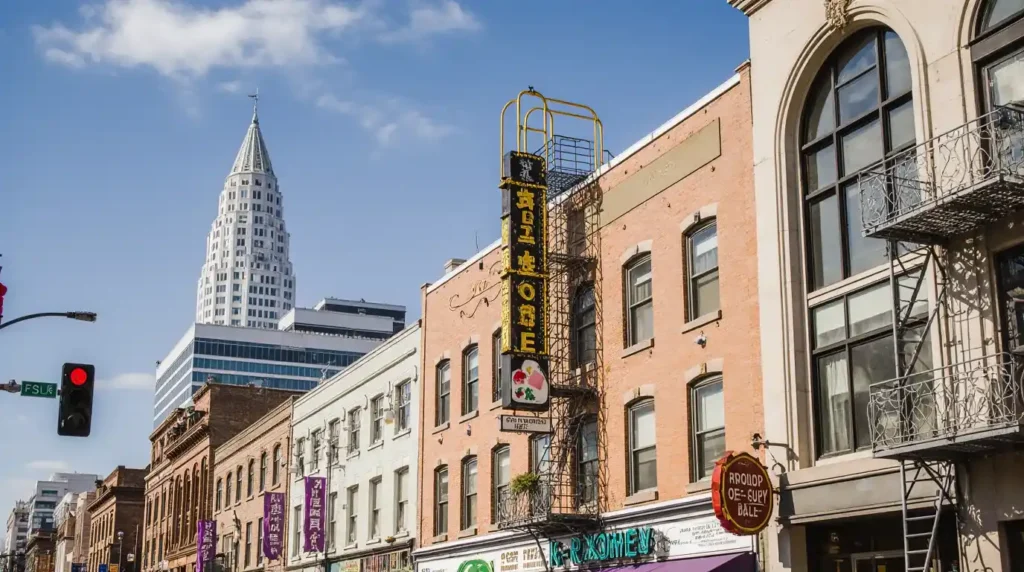
In 1995, Little Tokyo achieved a significant milestone with its designation as a National Historic Landmark District, joining San Francisco and San Jose as one of only three official Japantowns in the United States. This recognition marked a pivotal moment in preserving the district’s rich cultural legacy and historical significance.
The landmark status encompasses several key aspects:
- Architectural Preservation: Protection of historic buildings that showcase Japanese-influenced design elements and early 20th-century commercial architecture
- Cultural Resource Protection: Safeguarding traditional businesses, religious institutions, and community organizations
- Urban Planning Guidelines: Establishment of specific development regulations to maintain the district’s authentic character
This designation has empowered local organizations to implement preservation initiatives:
- Building restoration projects that maintain historical facades
- Documentation of cultural practices and traditions
- Creation of educational programs about Japanese American heritage
- Development of heritage tourism opportunities
The historic landmark status serves as a powerful tool for community identity and urban development. It provides legal protection against demolition or significant alterations of historically significant structures while allowing for thoughtful modernization that respects the area’s cultural integrity.
Local preservation efforts have focused on:
“Maintaining the delicate balance between progress and preservation, ensuring Little Tokyo remains both a living community and a historical treasure” – Little Tokyo Community Council
The district’s recognition has sparked renewed interest in Japanese American history, attracting visitors who seek authentic cultural experiences. This designation has also strengthened the community’s voice in city planning decisions, ensuring development projects align with preservation goals.
Through careful stewardship, Little Tokyo continues to evolve while honoring its historical roots. The landmark status has become instrumental in protecting the physical and cultural landscape that makes this district unique in Los Angeles’s urban fabric.
Exploring Cultural Attractions and Institutions in Little Tokyo
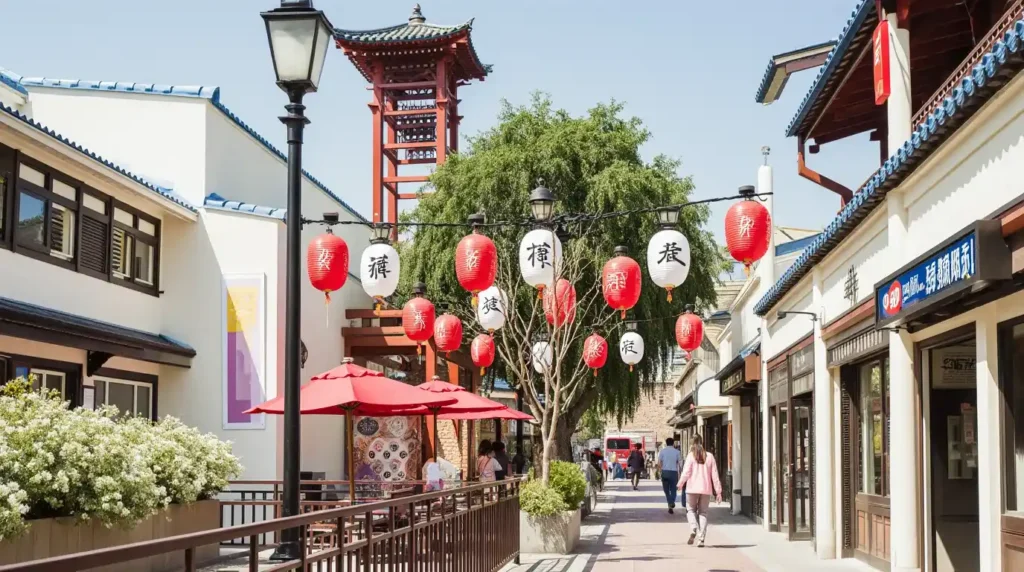
Little Tokyo is a vibrant neighborhood that showcases the rich heritage of Japanese Americans through its various cultural attractions and institutions. Here, you’ll find museums, theaters, and public art installations that offer an immersive experience, educating visitors about the community’s history while also inspiring them with artistic expressions.
Museums and Cultural Centers
The Japanese American National Museum (JANM) is a key institution in Little Tokyo dedicated to preserving Japanese American culture. Housed in the historic Nishi Hongwanji Buddhist Temple building, JANM features permanent exhibitions that chronicle the journey of Japanese Americans from their early immigration days to present-day experiences. Some highlights of the museum’s collection include:
- Personal artifacts from Japanese American internment camps
- Historic photographs and documents
- Art pieces reflecting Japanese American cultural identity
- Interactive exhibits exploring contemporary Asian American issues
Another notable cultural space is the Geffen Contemporary at MOCA, located in a repurposed police car warehouse. This contemporary art venue boasts 40,000 square feet of exhibition space and showcases a diverse range of artistic expressions such as:
- Large-scale installations
- Experimental art projects
- Multimedia exhibitions
- Works by emerging Asian American artists
Performing Arts and Media
East West Players, the longest-running professional Asian American theater company in the country, plays an integral role in enriching Little Tokyo’s cultural scene. Through their productions that highlight Asian American stories, development programs for aspiring playwrights, acting workshops, educational initiatives, and community outreach efforts, they foster artistic expression within the community.
Another significant organization is Visual Communications, established in 1970 with a mission to promote Asian American media arts. They achieve this through various initiatives including film festivals and screenings, digital archives documenting Asian American history, media production training programs, as well as documentary projects that capture authentic community narratives.
Public Art and Monuments
The streets of Little Tokyo are adorned with meaningful public art installations that pay homage to Japanese American experiences and contributions:
Go For Broke Monument
One such landmark is the Go For Broke Monument—a striking memorial honoring Japanese American soldiers who valiantly served during World War II while their families were subjected to internment. Crafted from black granite, this monument bears the names of over 16,000 Japanese American veterans alongside historical photographs and educational panels detailing their military service.
Community Art Installations
In addition to monuments like Go For Broke, public art throughout Little Tokyo weaves together visual narratives depicting community history. Murals showcasing Japanese American experiences can be found adorning buildings alongside traditional Japanese gardens offering serene spaces amidst bustling streets. Contemporary sculptures blending Eastern and Western influences further enrich the artistic landscape while street art celebrates Asian American identity through vibrant expressions.
These cultural spaces work hand-in-hand to create an engaging educational environment where stories come alive through various mediums—be it visual arts or performing arts—inviting all who visit into deeper conversations about heritage preservation and representation.
Community Life: Balancing Development with Preservation in Little Tokyo
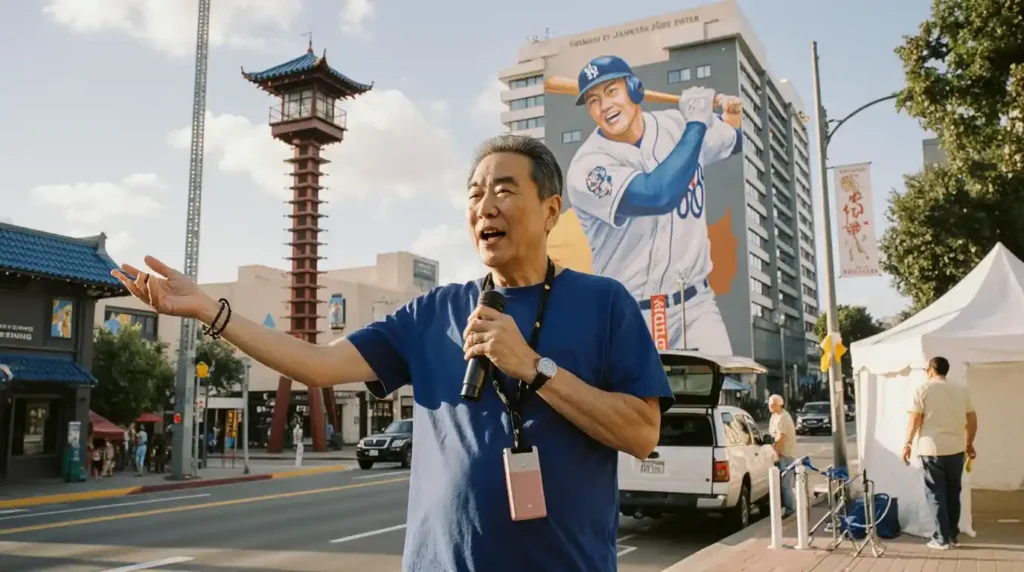
Little Tokyo’s residential landscape showcases a captivating mix of architectural styles from various periods. Traditional dojunkai apartments, reminiscent of 1920s Japanese housing, coexist with contemporary mixed-use developments. The neighborhood offers a range of housing options:
- Historic residential hotels like the Miyako Gardens
- Contemporary apartment complexes such as AVA Little Tokyo
- Affordable senior housing units at Casa Heiwa
- Sustainable living spaces in Wakaba LA
These diverse residential spaces reflect the community’s dedication to providing housing solutions for multiple generations while preserving cultural authenticity. Recent sustainable development initiatives incorporate eco-friendly building practices, rooftop gardens, and energy-efficient systems, setting new standards for urban living.
The commercial district thrives with a combination of long-established businesses and modern ventures. The Little Tokyo Community Council (LTCC) plays a crucial role in safeguarding the district’s identity while adapting to evolving times. Their initiatives include:
- Supporting legacy businesses through preservation grants
- Implementing facade improvement programs
- Creating cultural business districts
- Developing community-driven planning guidelines
Local organizations tirelessly strive to uphold Little Tokyo’s genuine atmosphere. The Sustainable Little Tokyo initiative advocates for projects that honor the area’s cultural heritage while embracing innovation. These endeavors have led to:
“Our goal is to create a neighborhood where tradition and progress coexist harmoniously, ensuring Little Tokyo remains vibrant for future generations” – Little Tokyo Community Council
The commercial landscape features distinctive elements:
- Japanese Village Plaza: A shopping center designed with traditional Japanese architectural elements
- First Street North: Historic storefronts housing multi-generational businesses
- Little Tokyo Galleria: Modern retail spaces blending contemporary and traditional offerings
- Arts District Edge: Creative spaces fostering cultural innovation
The LTCC’s preservation efforts go beyond physical structures to encompass cultural programming, business development workshops, and community engagement initiatives. These programs contribute to maintaining Little Tokyo’s status as a vibrant cultural district while adapting to contemporary urban demands.
Recent development projects prioritize community input, ensuring new additions harmonize with existing structures and cater to local needs. This collaborative approach has resulted in developments that respect architectural heritage while providing modern amenities and sustainable features.
Experiencing Culinary Delights, Shopping Haven & Annual Celebrations in Little Tokyo
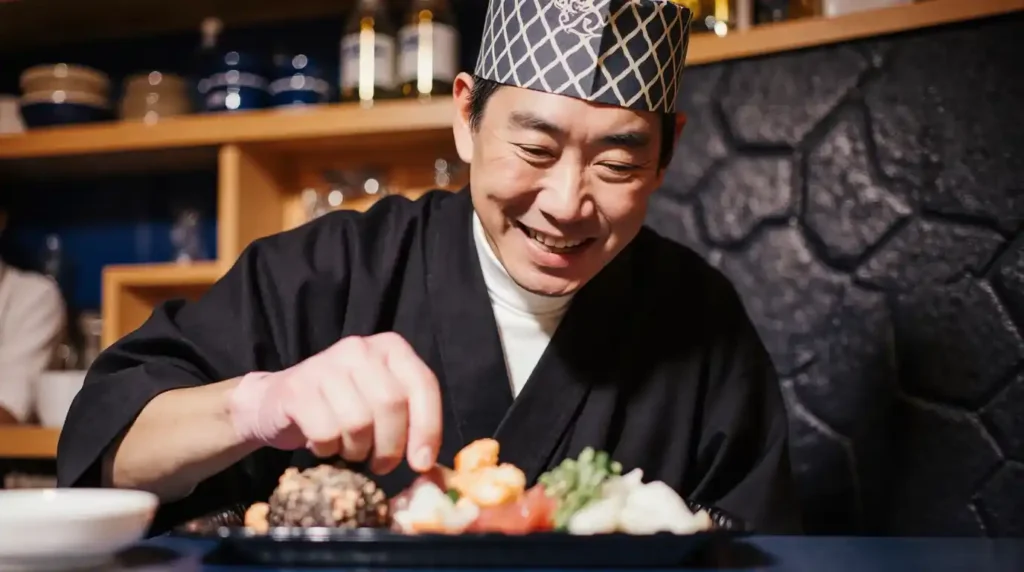
Little Tokyo’s vibrant food scene is a testament to authentic Japanese cuisine, attracting food lovers from all over Los Angeles and beyond. The area’s restaurants range from traditional family-owned places to modern fusion eateries, each playing a part in making it a top culinary destination.
A Foodie’s Paradise
Traditional Dining Spots
- Time-honored sushi bars offering omakase experiences
- Specialty ramen shops featuring regional varieties and house-made noodles
- Izakaya establishments serving small plates and sake
- Traditional teahouses offering matcha and wagashi
Modern Culinary Innovation
- Japanese-fusion restaurants blending cultural influences
- Specialty dessert cafes featuring mochi donuts and cream puffs
- Contemporary takes on classic Japanese street food
- Artisanal bakeries combining Japanese and European techniques
Shopping Destinations
The shopping experience in Little Tokyo reflects both traditional Japanese culture and contemporary trends. Japanese Village Plaza serves as the district’s retail heart, featuring:
- Traditional craft stores selling ceramics and textiles
- Japanese beauty and skincare boutiques
- Specialty food markets stocking imported ingredients
- Anime and manga shops
- Contemporary fashion retailers
Weller Court adds another dimension to the shopping landscape with:
- Japanese bookstores
- Gift shops featuring unique Japanese designs
- Traditional tea and incense merchants
- Modern lifestyle stores
Cultural Celebrations
The district’s calendar is filled with cultural events that bring the community together. The Nisei Week Festival, held annually since 1934, is Little Tokyo’s signature celebration, featuring:
- Grand parade showcasing traditional Japanese performing arts
- Taiko drum performances
- Martial arts demonstrations
- Traditional tea ceremonies
- Street food festivals
- Cultural exhibitions
Year-Round Cultural Events
These events transform Little Tokyo’s streets into lively gathering spaces where cultural traditions blend with contemporary celebrations. Local restaurants and shops participate by offering special menu items and merchandise, creating an immersive experience for visitors.
- Cherry Blossom Festival in spring
- Summer food festivals celebrating regional Japanese cuisine
- Monthly art walks featuring local Japanese American artists
- Seasonal matsuri celebrations
- Traditional New Year celebrations
Future Outlook for Little Tokyo: Navigating Challenges Ahead with Resilience
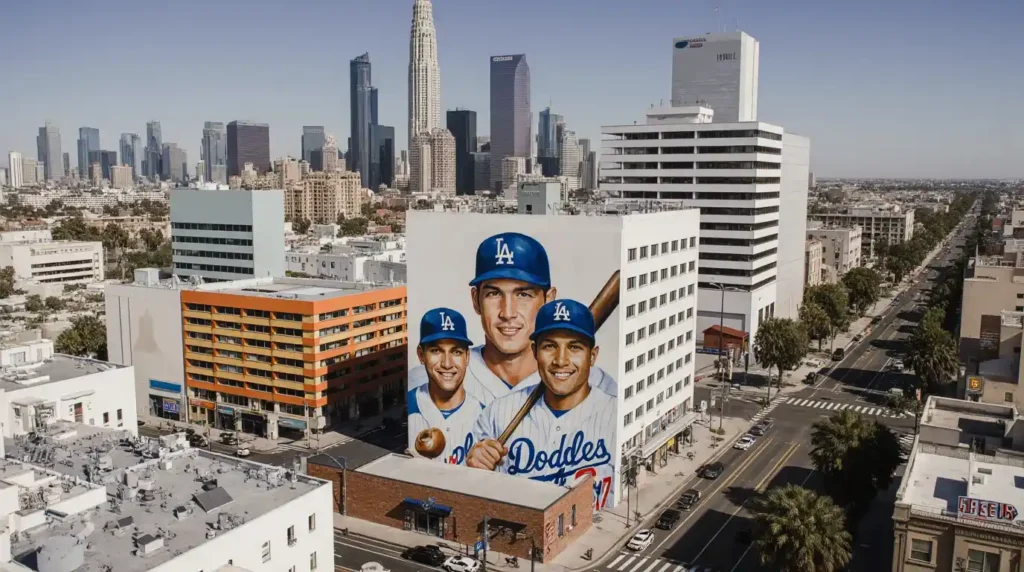
Little Tokyo faces significant urban development pressures as downtown Los Angeles continues its rapid transformation. The district’s commitment to sustainable redevelopment while preserving its cultural heritage creates both opportunities and challenges.
Key Development Initiatives:
- Regional Connector Transit Project integration
- Affordable housing developments targeting multi-generational residents
- Sustainable infrastructure improvements
- Small business support programs
The Little Tokyo Community Council spearheads innovative solutions through their Sustainable Little Tokyo initiative, focusing on:
“Community-driven development that strengthens the cultural-historic neighborhood through arts, environmental sustainability, and small business viability”
Local organizations actively work to protect legacy businesses while embracing necessary modernization. This includes implementing green building practices, creating pedestrian-friendly spaces, and developing mixed-use properties that serve both residents and visitors.
Preservation Strategies:
- Historic building restoration projects
- Cultural space designation programs
- Community land trust development
- Local business incubation programs
The district’s resilience stems from its strong community bonds and adaptive approach to change. Current projects emphasize maintaining authentic Japanese American character while incorporating contemporary urban planning principles. This balanced approach ensures Little Tokyo remains a living, breathing neighborhood rather than becoming solely a tourist destination.
The Regional Connector Transit Project presents both challenges and opportunities, promising increased accessibility while raising concerns about gentrification. Community leaders actively engage with city planners to ensure development decisions reflect local interests and preserve the district’s unique cultural identity.
Conclusion
Little Tokyo is a vibrant symbol of Japanese American resilience, cultural heritage, and community spirit. This historic district offers visitors an authentic glimpse into Japanese American life through its lively streets, cultural institutions, and culinary experiences.
Supporting Little Tokyo means:
- Preserving an important part of American history
- Empowering local businesses that uphold cultural traditions
- Contributing to the neighborhood’s ongoing vitality
- Engaging with a dynamic community shaping its future
The district’s ability to adapt while staying true to its cultural identity makes it a one-of-a-kind destination in Los Angeles. Each visit to Little Tokyo creates meaningful connections between past and present, tradition and innovation. The neighborhood’s legacy lives on through its dedicated community members, cultural institutions, and visitors who appreciate its irreplaceable value in America’s diverse cultural landscape.
Little Tokyo invites everyone to be part of its story – a story of resilience, cultural preservation, and community strength that continues to unfold with each passing day.
FAQs (Frequently Asked Questions)
What is Little Tokyo and why is it significant in Los Angeles?
Little Tokyo is a vibrant Japanese American district located in downtown Los Angeles, serving as the cultural and civic center for Japanese Americans in Southern California. It is renowned for its rich heritage, community resilience, and as a hub for cultural attractions, events, and authentic Japanese experiences.
How did historical events shape the development of Little Tokyo?
Little Tokyo’s development was influenced by early Japanese immigration in the 1880s, driven by exclusionary laws like the Chinese Exclusion Act. The 1906 San Francisco earthquake prompted migration that helped establish key institutions such as churches, temples, schools, and newspapers like Rafu Shimpo. World War II led to forced removal and incarceration of Japanese Americans, causing demographic shifts and post-war challenges that shaped the neighborhood’s evolution.
What does it mean that Little Tokyo is a National Historic Landmark District?
In 1995, Little Tokyo was officially designated as one of three Japantowns in the United States recognized as a National Historic Landmark District. This status highlights its importance in preserving Japanese American cultural heritage and strengthens community identity while guiding urban planning efforts to maintain its historic character.
What cultural attractions can visitors explore in Little Tokyo?
Visitors to Little Tokyo can experience key cultural institutions such as the Japanese American National Museum and Geffen Contemporary art center. The area also features theaters like East West Players and organizations like Visual Communications that promote Asian American culture. Public artworks including the Go For Broke Monument commemorate Japanese American history and contribute to education and community beautification.
How does Little Tokyo balance modern development with cultural preservation?
Little Tokyo maintains a balance between sustainable redevelopment and cultural preservation through residential neighborhoods featuring traditional and new housing styles. Local organizations like the Little Tokyo Community Council actively promote initiatives that support vibrant commercial spaces while respecting the area’s heritage, ensuring that modernization does not compromise its unique identity.
What culinary delights and events make Little Tokyo a popular destination?
Little Tokyo offers a diverse culinary scene with authentic Japanese cuisine including sushi and ramen that attract both locals and tourists. The district also hosts popular shopping venues featuring unique Japanese goods. Annual celebrations such as the Nisei Week festival feature parades, performances, and food fairs that celebrate heritage and foster unity among residents and visitors alike.



